
“Miss Cyborg” taken from Sahel digital
A picture that Christopher Kickley used in his Lift13 presentation last week. New African Aesthetic probably.
Read More
“Miss Cyborg” taken from Sahel digital
A picture that Christopher Kickley used in his Lift13 presentation last week. New African Aesthetic probably.
Read More“The inpossible is a method of practice that uses aspects of Design Fiction to explore a design space that does not possess a clear or established path to its resolution. Aesthetics play an important role in suspending disbelief in the fiction yet, unlike Design Fiction, inpossible ideas do not stand alone as a form of entertainment, nor do they simply soft-soap a society into accepting change. They actually bring it about. The importance of inpossible projects and events is that they are visionary and propose ideas that require new kinds of practice. As such, they are a journey of discovery that gives rise to ‘inpossible’ events, which may be challenges and opportunities that shape decision making. Inpossible ideas and events are simply ways of working when there are many variables and unknowns in exploring the possibilities of a vision, no matter how far away its realization may seem. Indeed, many inpossible projects and ideas may take more than one lifetime to achieve, However, their importance is not bound up in getting the imagined outcome but in the processes that take places along the way. Inpossible ideas connect people to each other - even across generations - and are not just catalysts for change but the source of novelty. This may be a form of radical ideation, or the creation of new tools and ways of working - and perhaps even a complete revolution in the way that we live!”
- Rachel Armstrong, in a write-up to her Lift13 speech.
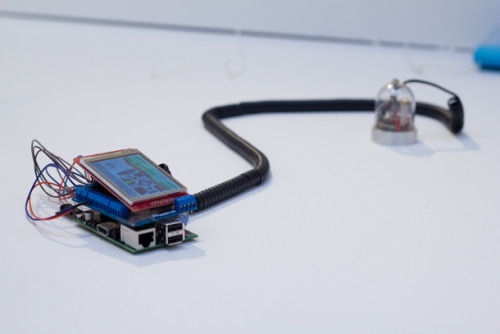

The OpenPositioningSystem project by Philipp Ronnenberg (Design Interaction, RCA):
“This navigation system is open. Which means it is not run by companies nor control. The goal is to gather interested people on the web platform openps.org to develop the necessary software, hardware and testing processes. Anybody who is interested, from beginner to professionals can participate and contribute their knowledge to the community and this system. To use given things in cities and reuse them for the projects needs is one aim of this project. The idea is to use seismic frequencies, produced by generators in power plants, turbines in pumping stations or other large machines running in factories. These generators, machines etc. are producing seismic activity, distributed over the ground. The sensor prototype can detect seismic waves on the ground, walls or anything with enough contact to the ground. At the current stage of this project the sensor can detect and collect different frequencies.”
Why do I blog this? One of the most interesting locative media project I’ve seen in weeks! The usage of seismic activity detection has a way to collect information about location is fascinating and curious.
Read More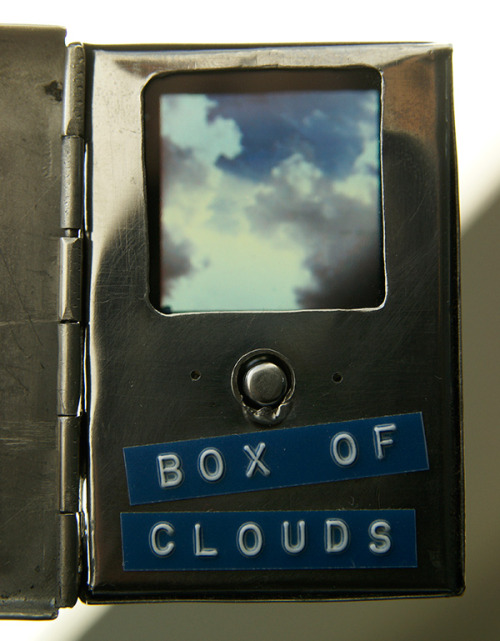
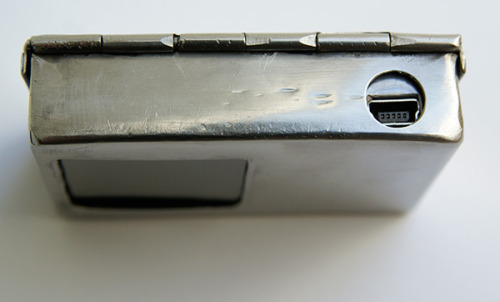
Read MoreA photo viewer key ring dismembered and installed into a small tin. I removed the backlight from the LCD to make it transparent; allowing it to be held up to the sky. Images of clouds cycle automatically and the box is charged via USB.
Found here
Read MoreCrayon Creatures
Read More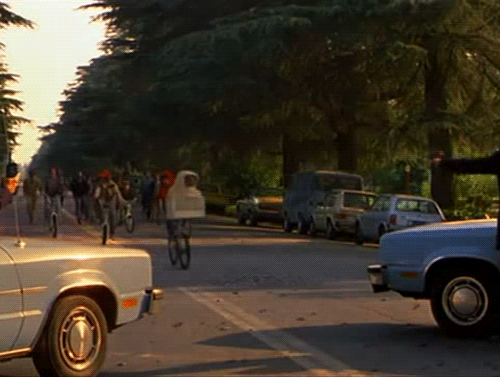
“
“Why are people with Internet fridges always running out of milk and eggs — who are these obsessive custard-eaters? Why don’t people with internet fridges run out of bacon?
Designers of internet fridges might think everything perishable in the kitchen belongs in the fridge. But there are a great many things that simply don’t belong there. Not to mention all the things that you could buy at a supermarket that aren’t for the kitchen at all. Toothpaste? Shampoo?
Designers of internet fridges might think everything comes in a barcoded or RFID’d package that can be programatically tracked. However, many products don’t come in packages, and even packaged products sometimes don’t include individual barcodes or RFID tags.
Designers of internet fridges probably don’t go grocery shopping (or haven’t paid attention to people getting ready to go grocery shopping). Preparing a shopping list isn’t only about noting what’s gone but what will be gone, given future use, before the next shopping trip. That is, it requires understanding patterns of previous consumption and anticipating future use of ingredients and products.
To construct an internet fridge, first reconstruct the reality of domestic life.”
” Designers of internet fridges don’t have a lot of imagination (as described in this post. Why do I blog this? because I always take the smart fridge as an example of a recurring failure of technology, a bad representation of people’s habits, context and way of living.
-
Nintendo game counselor binders via Kotaku
Read More
Read MoreNo smartphones symbol.
Traditionally ‘no phone’ signs have meant no phone calls, but there’s a new predominant cultural use of phones, which is poking at the internet through touch screens. We should be able to address this behaviour too if we need to, in cinemas or theatres for example.
Go ahead, download and use it: PDF / EPS / high-res PNG.
No Rights Reserved: to the extent possible under law, Timo arnall has waived all copyright and related or neighboring rights to the ‘No smartphones symbol’.
Awesome game with sifteo cubes by @oneliferemains
Read Morethingsmagazine: This Must be the Place, Roy Lichtenstein, 1965
Read More“
“Loop through the text and make a Dictionary, meaning key - value container. And put all pair of words as keys and the word following as a value. For example: if you have a text: “a b c a b k” you start with “a b” as key and “c” as value, then “b c” and “a” as value… the value should be a list or any collection holding 0..many ‘items’ as you can have more than one value for a given pair of words. In the example above you will have “a b” two times followed fist by “c” then in the end by “k”. So in the end you will have a dictionary/hash looking like this: {‘a b’: [‘c’,’k’], ‘b c’: [‘a’], ‘c a’: [‘b’]}
Now you have the needed structure for building your funky text. You can choose to start with a random key or a fixed place! So given the structure we have we can start by saving “a b” then randomly taking a following word from the value, c or k, so the first save in the loop, “a b k” (if “k” was the random value chosen) then you continue by moving one step to the right which in our case is “b k” and save a random value for that pair if you have, in our case no, so you break out of the loop (or you can decide other stuff like start over again) When to loop is done you print your saved text string.
The bigger the input, the more values you will have for you keys (pair of words) and will then have a “smarter bot” so you can “train” your bot by adding more text (perhaps chat input?). If you have a book as input, you can construct some nice random sentences.”
” How do Markov Chain chatbots work … reading about markov chain and book writing…
-
A presentation called “Many Tamagotchis Were Harmed in the Making of this Presentation” by Natalie Silvanovich.
As the speaker puts its, it’s good lessons about “interfacing with devices you’re not supposed to interface with”.
Read MoreDark Patterns: User Interfaces Designed to Trick People :
Presented at UX Brighton 2010 by Harry Brignull
Read More“
If you view the mass adoption of 3D printing as an inevitability – whether it be through people all owning their own 3D printers or, more likely, paying by usage at a local 3D-printing store – then it follows that many more people will start ripping out and replacing static components of various devices, such as smartphones.
If that happens, then many less skilled practitioners of the art will start messing up said devices with parts that just don’t fit as well as they should. Nokia’s 3DK release should reduce that risk for customizers of Lumia 820 phone shells, making it more likely that they will remain satisfied with the overall product experience. It’s like releasing a solid SDK, only for hardware, and it’s a smart move on many levels.
” David Meyer at GigaOM about the release of 3D templates, case specs, recommended materials and best practices related to the Lumia 820 phone shell. Why do I blog this? Although I don’t necessary buy the “3D printing as an inevitability” argument, I’m intrigued by the consequences of such move by Nokia. Will users follow the best practices? Will there be any weird repurposing? Is that a weak signal of something that will be more general? I’m frankly not sure everyone will/can do it but it’s curious to think of “amateurs” trying things (as “choosing something on Thingiverse and modifying it a little bit”).
-
The Apple icon garden.
Read More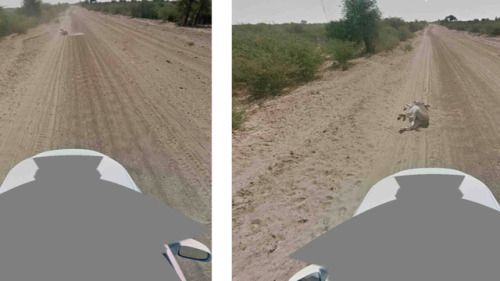
“Did Google Kill this Donkey?” asks Jalopnik. The answer is no:“Because of the way our 360-degree imagery is put together, it looked to some that our car had been involved in an unseemly hit and run, leaving the humble beast stranded in the road.
As our imagery below shows, the donkey was lying in the path - perhaps enjoying a dust bath - before moving safely aside as our car drove past. I’m pleased to confirm the donkey is alive and well.”
Read More“We live in a time when the loneliest place in any debate is the middle, and the argument over technology’s role in our future is no exception. The relentless onslaught of novelties technological and otherwise is tilting individuals and institutions alike towards becoming Engineers or Druids. It is a pressure we must resist, for to be either a Druid or an Engineer is to be a fool. Druids can’t revive the past, and Engineers cannot build technologies that do not carry hidden trouble.”
- “The Coming Fight Between Engineers And Druids” by Paul Saffo, in Edge: What should be we worried about?.
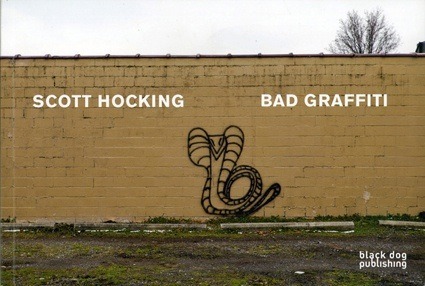

From Regine Debatty’s review of Bad Graffiti by Scott Hocking.
Why do I blog this? I’m fascinated by bad art/naive production and the sort of effect they produce. When it comes to graffiti, I’ve always been intrigued by the way ugly throw-ups, bad drawings and paint stains form a curious urban texture.
Read More